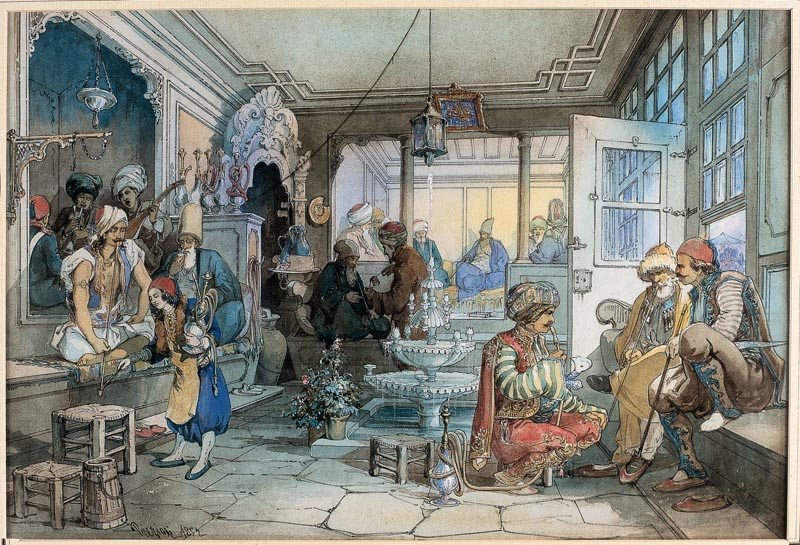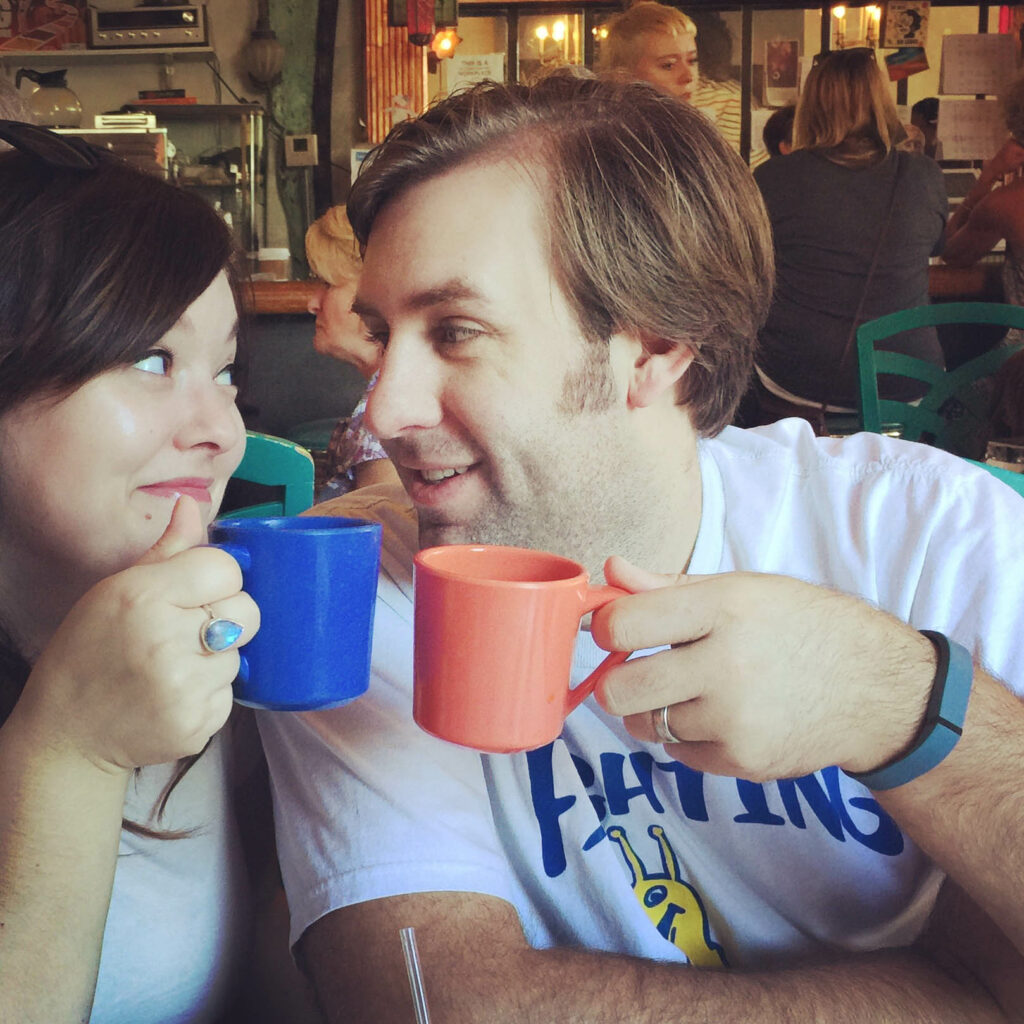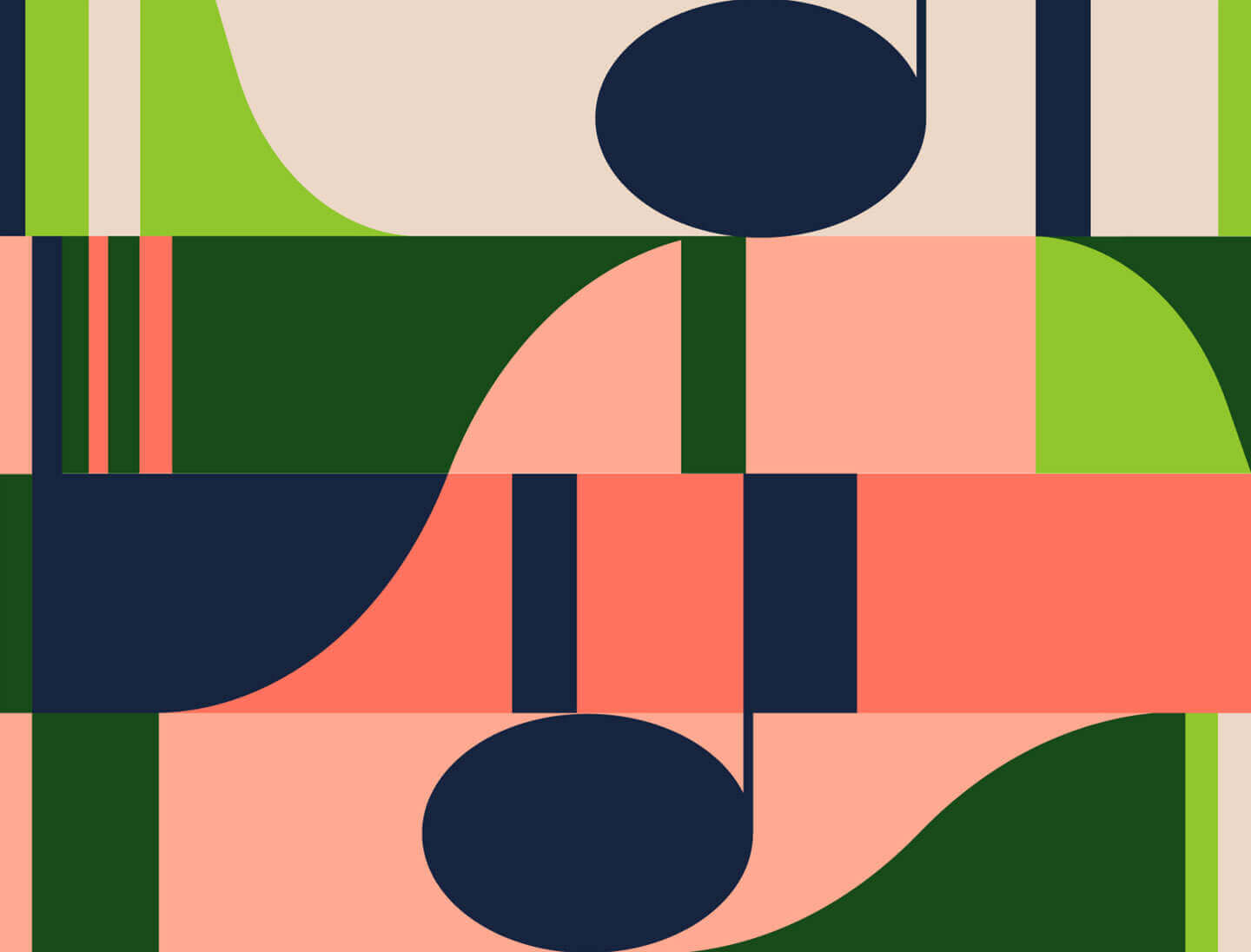November 3rd, 2021 • Music Education
Coffee: Music’s Perfect Match?
Music and coffee have been integral fixtures of global human culture for many, many years—just like music, the heritage of coffee can be traced back for centuries.
As the temperature continues to fall and the leaves change, the days march onward with beautiful music filling the halls in preparation for performances, recitals, and competitions this fall and winter season. If you’re curious about everything happening around here (and there is a lot!) and you haven’t joined already, make sure to sign up for our monthly Music Matters Newsletter—it’s one of the best ways to keep up with any news, announcements, or special events going on at the Conservatory. You can also connect with us online through Facebook, Twitter, Instagram, LinkedIn, and even TikTok—we work really hard to share informative, fun, and relevant content on these platforms. Go hit that follow button!
In an effort to keep sharing that unique and interesting content with our Conservatory community, we are bringing you something extra fun for today’s blog post! Here at the Omaha Conservatory, we are obviously big fans of music from every genre, and we believe that music of all kinds serves as a source of lifelong joy and inspiration for anyone. Additionally, if you’ve ever visited us in person, you might know about a particularly unique and special part of our building and community: the Accelerando Coffee House! Besides Accelerando being a space for students, families, staff, and Artist-Faculty to conveniently grab a delicious drink or bite to eat, we began to think about how coffee—in more ways than one—is a perfect counterpart to the music being made under the very same roof, and vice versa. You might be thinking “Sure, I like coffee and I like music—but what’s the big deal? Why a whole blog post dedicated to the two?”
Fair question. Music and coffee are two things that many people enjoy on a daily basis, but might not think of as an intentional pair.
However, we did some research and found that the connection between these two runs deeper than you might think…from a historical, psychological, AND social perspective. As a bonus, we talked with the Conservatory’s resident “coffee-obsessed” couple and Artist-Faculty members, Candace and Cody Jorgensen! If you didn’t already know, Accelerando Coffee House is actually owned by Candace and Cody (cello and voice Artist-Faculty, respectively). Besides being successful professional musicians and fantastic teachers, coffee has been a major pillar of their lives—personally and musically—for a very long time, and they were kind enough to share with us some of their journey and how they found themselves self-identifying as “coffee obsessed.” Keep reading to see what we learned—and spoiler alert: coffee might just be music’s perfect match!
Music and coffee have been integral fixtures of global human culture for many, many years—just like music, the heritage of coffee can be traced back for centuries.
According to the National Coffee Association of the U.S., a goat herder named Kaldi first discovered the “potential of these beloved beans” in the Ancient Coffee Forests on the Ethiopian plateau:
“The story goes that Kaldi discovered coffee after he noticed that after eating the berries from a certain tree, his goats became so energetic that they did not want to sleep at night. Kaldi reported his findings to the abbot of the local monastery, who made a drink with the berries and found that it kept him alert through the long hours of evening prayer. The abbot shared his discovery with the other monks at the monastery, and knowledge of the energizing berries began to spread.”
https://www.ncausa.org/about-coffee/history-of-coffee

As exciting news often does, word spread and the cultivation and trade of coffee beans began on the Arabian Peninsula. It continued to gain popularity through the 15th Century, and was enjoyed not only in private homes but in public coffee houses…just like the present day! Apparently, these coffee houses (called qahveh khaneh) were hubs for all kinds of social events, gatherings, and other activities.
Here’s an especially fun fact: not only did the patrons of the qahveh khaneh drink coffee and engage in conversation, but they often enjoyed live music!
In addition to enjoying performances, patrons gathered in coffee houses to play games like chess and discuss the news. As European travelers to the East brought back tales of the energizing dark beverage, coffee made its way to Europe in the 17th Century, inciting a similar excitement to that of the Near East. In England, patrons would go to coffee houses specifically to enjoy a cup and engage in intelligent, stimulating conversation.
If any of this is sounding familiar, we promise you’re not crazy: in addition to the nobility and religious leaders (such as Pope Clement VIII, who gave papal approval to coffee after tasting and enjoying it so much!), the same cultured, upper-middle (bourgeois) class that became the ready-made audience for European art music was ALSO enjoying coffee. Here’s a couple additional fun facts about classical music’s connection with coffee:
- J.S. Bach often held concerts at Zimmerman’s, his favorite coffee house in Leipzig. It was during this time in his life that he wrote a dramma per musica (a mini comic opera of sorts) entitled “Schweigt stille, plaudert nicht” (“Be Still, Stop Chattering”), which featured a main character addicted to coffee. It has become known as the “Coffee Cantata.”
- Beethoven was a picky coffee drinker: some say that he brewed his coffee using exactly 60 beans, believing this to be the golden amount for the perfect cup of coffee.
- Gioachino Rossini was quoted to have said that coffee’s effects wore off after a period of constant use. “Coffee is a matter of 15 or 20 days, luckily the time to make an opera.”
Long story short, we can draw parallels between the patronage, enjoyment, and knowledge of classical music as it developed through the Renaissance (and eventually the 17th, 18th and 19th centuries) to the existence of coffee and coffee houses as a hub to discuss things like art, business, and news.
An even simpler explanation? If you drank coffee and enjoyed music, it signaled that you were intelligent, worldly, and appreciated the “craft” involved in creating both. Thankfully, times have changed a bit; now, music and coffee are accessible to anyone and not just the nobility and wealthy.
Interestingly, Candace and Cody’s obsession with (good) coffee can be partly attributed to their time spent traveling and living overseas—Cody shared that he started making himself coffee when he was living at a summer stock theater as a stage manager while in college. “I made Folgers based on the recipe on the coffee can…it was terrible. I don’t think the people at Folgers field tested that coffee/water ratio.”
Initially, Accelerando was Candace’s vision. Cody came on board when they were both working on cruise ships.
“We would get to try out coffee shops all over Europe, and we kept a journal of every place we tried coffee. It provided a lot of inspiration when we opened up Accelerando,” Cody said.
Candace’s love for coffee started towards the end of high school and grew in college. A turning point came on a choir tour in Germany. She was sitting in an outdoor museum and realized she loved the feeling of community that coffee and coffee shops provide and that she wanted to be able to “explore music and teaching in a similar environment.”
Besides good music and a good cup of coffee being part of many people’s daily lives, the link between the two clearly runs deeper: both music-making and coffee houses have played pivotal roles in community-building and providing a space to create and enjoy life-enriching experiences, but it is also notable that coffee and music are both produced by a group of people working together.
The complex coffee supply chain from farm to cup fosters collaboration much in the same way that the music of an orchestra is the result of collaborative effort from many individual and unique parts!
Coffee craftsmen/women and musicians are both no strangers to being goal-oriented from beginning to end, shaping their “product” with care from the very beginning and making adjustments to create a stunning final product. Candace and Cody see tons of overlap in their love for music, teaching, and performing with their love for coffee: “I’ve found that no matter the discipline, developing a skill eventually boils down to your ability to pay attention to smaller and smaller details” Cody says. “That applies to musical technique, how you teach, and brewing coffee all the same. The caffeine doesn’t hurt either.” When asked how they approach both the crafts of coffee and the creativity of being musicians, Candace and Cody agreed that both boil down to community: “Music doesn’t exist in a vacuum. It’s the energy of the people around you that encourage creativity.”
One thing that coffee shops almost always provide is a sense of “ambience,” most often defined as the character or atmosphere of a place or physical surroundings. These can be things such as light quantity and quality, the noise type and level, the actual size and shape of the space, the smells, the visual appeal, etc. Though each of those things do indeed contribute to your overall experience in a space, we found that one of those thing in particular is especially important: sound. You’d be hard pressed to find a coffee shop that doesn’t at least play background music, and the presence of music of some sort has become the norm in shops worldwide. While it might not seem like anything else than a casual coincidence, or at the very least a way to keep staff and customers from sitting in complete silence, there is more than meets the eye (or the ear, perhaps).
From a branding perspective, music helps coffee shops create and maintain an identity in which they hope their customers will relate to. A more surprising finding, however, is that music may literally make your coffee taste better! Dr. Charles Spence, a professor of Experimental Psychology at Oxford University, published a paper exploring the ways that sound and food work together with our mind to create illusions of taste. His findings were that high pitched sounds enhanced sweet and sour flavors while lower pitched sounds enhanced bitter tastes. Dan Pashman (host of The Sporkful podcast) brings up another good point: “We now now that the people who designed potato chip bags didn’t make them noisy just for the sake of the chips, they made them noisy for the sensory experience. Research has shown that if people hear the sound of that packaging being crumpled while they’re eating the chips, they will think that the chips are crisper, crunchier, fresher, better only because that sound is being played in the background.”
When applying this to other food and drink, Pashman calls attention to the varying, complementary, or even contrasting notes often found in chocolate, wine, or….a cup of coffee. “It can be hard for your brain to make sense of it all and to latch on to something—it turns out that different pitches of sound or music sort of act as ways to highlight certain features of a food.” Dr. Spence calls this phenomenon “sonic seasoning,” and you can try it for yourself below:
Take a piece of chocolate or sip of coffee and register how sweet or bitter it is. Then, take a second bite or sip and hold it in your mouth.
Listen to this first clip. Do you notice sweet or bitter flavors more?
Now listen to this clip with that same bite or sip. What flavors do you sense now?
Did your results match up with Dr. Spence’s findings?
Interestingly, music played in a coffee shop (or general ambient sound) has also been found to enhance “cognitive flexibility,” which refers to the brain’s ability to think and perform diversely when solving problems and learning concepts, and it has also been linked to creativity! While we definitely can imagine that creativity and openness to musical exploration can be fostered in a space like a coffee shop, Candace shared that she has experienced this herself: “I think people just have more ideas in a coffee shop—we’ve found music opportunities often present themselves there. Some of our favorite moments are when we are able to have intimate performances in the coffee shop setting.”
Perhaps unsurprisingly, research suggests that coffee itself can actually have a similar effect on inspiring creativity too, as caffeine can help our brains focus and boost brain function in a number of different ways. Both caffeine and music also access the pleasure and reward centers and circuits in our brains—the medial forebrain bundle (MFB), which contains pathways from the limbic system and hypothalamus—also known to help release the neurotransmitter chemicals known as dopamine and serotonin. When you listen to music you enjoy or are familiar with, your brain releases dopamine, which is often equated with joyful or feel-good emotions. Coffee (or any substance containing caffeine) actually increases the production and release of dopamine. Here’s a fun video about your brain on coffee if you want to learn more:
For Candace and Cody, music and coffee have always gone hand in hand: “It was always the constant thing no matter what phase of life. Even as we were struggling musicians living overseas, coffee was the one thing we didn’t sacrifice.” To close, we asked them a few rapid-fire fun questions:
Coffee Beverage of choice?
Candace: Coffee — like the beastie boys prefer.
Cody: Traditional cappuccino. 2oz espresso, 3 oz milk. **chefs kiss**
Your favorite part about your business and your studios being under the same roof?
Both: Unlimited coffee!
Coffee’s best baked good sidekick?
Candace: Coffee Cake
Cody: Cookies. Santa got it half right
We hope you enjoyed this dive into why coffee and music are often best when they’re together—and hopefully that you learned a thing or two! Next time you’re at the Conservatory, stop in and grab a delicious drink from Accelerando Coffee House, and make sure to thank Candace and Cody for helping bring coffee and music under one special roof here in Omaha!




